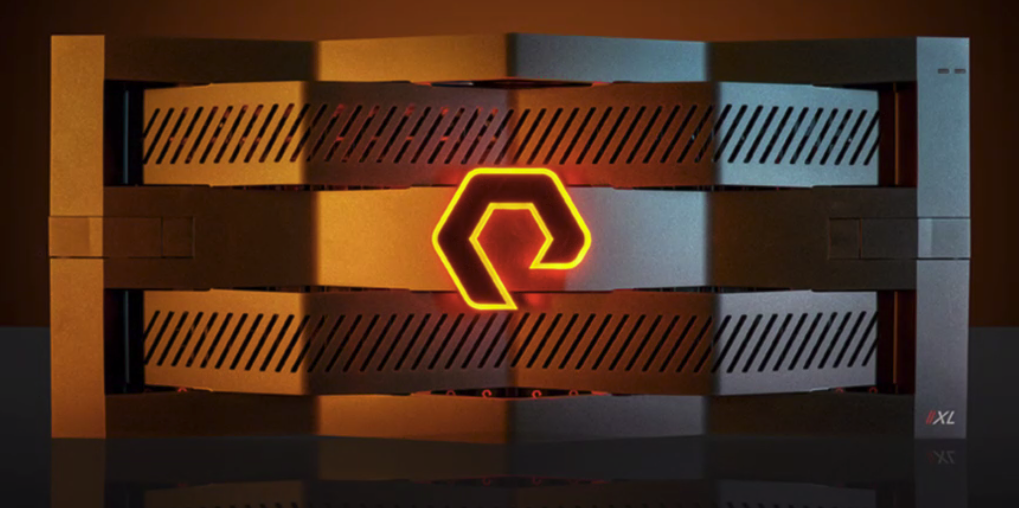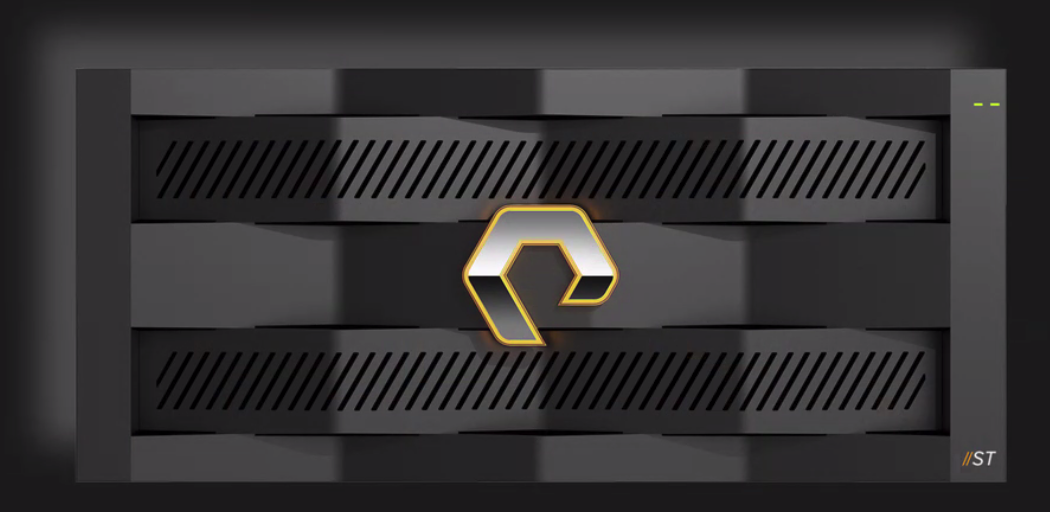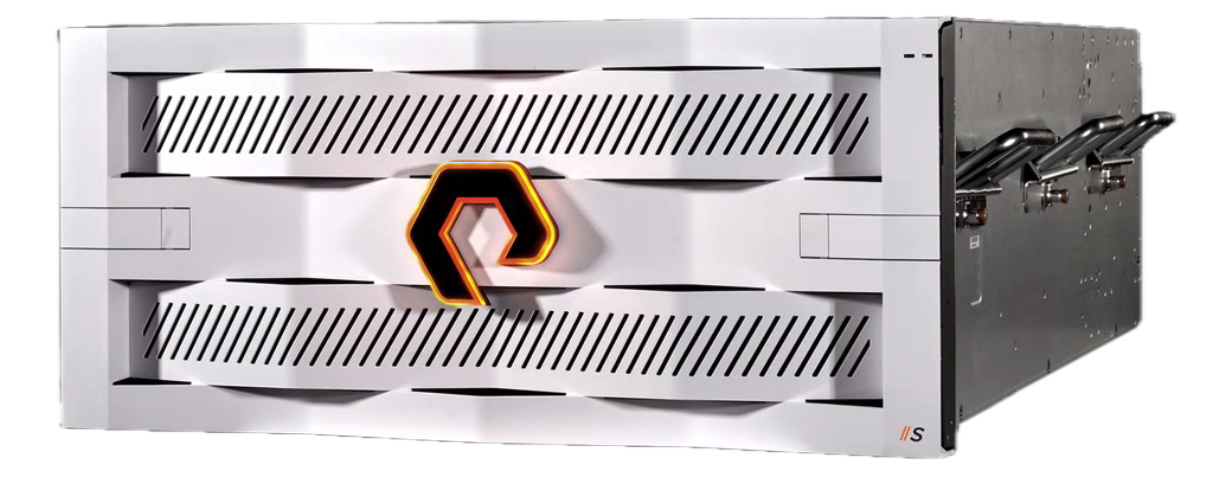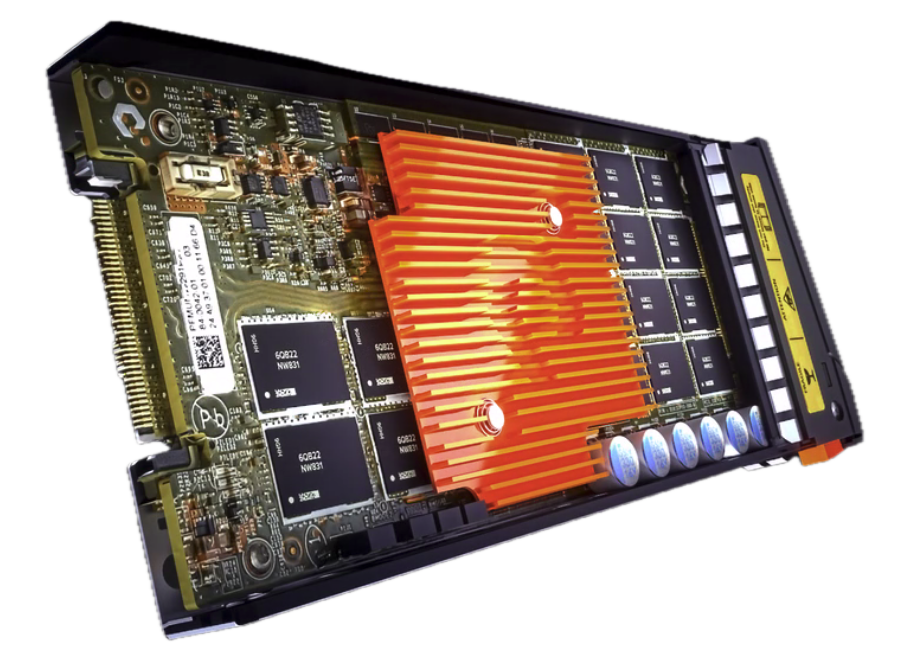Pure Storage redefines data management with the introduction of the Enterprise Data Cloud, focusing on where, when, and how data is used.
Pure Storage has announced a significant evolution in its approach to data management with the introduction of the Enterprise Data Cloud (EDC). This architectural shift aims to provide organizations with a simpler, more agile, and unified way to manage data across on-premises, public cloud, and hybrid environments. Simultaneously, Pure is expanding its next-generation storage products, FlashArray and FlashBlade, designed to meet the demands of high-performance workloads.
The Enterprise Data Cloud
Traditional storage models often lead to fragmentation, silos, and uncontrolled data sprawl, making it difficult for organizations to derive maximum value from their data. The Enterprise Data Cloud (EDC) seeks to address these challenges by providing a virtualized cloud of data with unified control, spanning diverse environments. This approach enables intelligent, autonomous data management and governance across the entire data estate.
According to Charles Giancarlo, Chairman and CEO of Pure Storage, the EDC represents a fundamental shift from managing storage to managing data. With the increasing value of enterprise data driven by AI and the growing threat of cyberattacks, traditional data storage architectures have struggled to keep pace with these developments. He added, Pure Storage aims to solve this problem with an architectural approach that empowers customers to manage their global data estate with the control, automation, and tracking needed to thrive in a data-driven world.
At the heart of the EDC is Pure Fusion, which unifies storage as a pool of adaptable resources. Pure Fusion is natively built into the arrays, allowing them to automatically discover a broader fleet without requiring extensive storage administrator configuration. Administrators can manage the entire fleet from any system, as each array acts as an endpoint.
Enhanced Automation and Security
Pure Storage is also introducing new capabilities to reduce the risk of human error and strengthen security. Automation spans the entire platform stack, featuring policy-driven orchestration and self-service capabilities. Built-in compliance and enhanced cyber resilience are integrated throughout the platform to minimize risk through robust security and governance policies.
New workflow orchestration capabilities allow customers to deploy orchestrated workflows across their entire IT environment. Built on thousands of existing connectors to third-party applications, including Cisco, Microsoft, VMware, ServiceNow, and Slack, these workflows can be easily deployed across storage, compute, network, database, and application configurations. Customers can run pre-set recipes, build custom ones specific to their environment, or utilize partner recipes for application-to-infrastructure automation.
At the heart of the EDC are Pure Storage’s flagship solutions: FlashArray and FlashBlade. These platforms are engineered to deliver performance, reliability, and flexibility, supporting a broad spectrum of workloads within a single, integrated experience.
Next-gen FlashArray//XL, FlashArray//ST, and FlashBlade//S
FlashArray//XL R5 sets a new benchmark for performance at scale. With double the IOPS per rack unit and up to 50% more raw capacity than its predecessor, FlashArray//XL enables customers to consolidate diverse workloads onto a single platform. This consolidation drives operational simplicity and cost savings, which are critical advantages for organizations managing large-scale, mission-critical environments.

FlashArray//XL Technical Specifications
| Model | Capacity | Physical Specifications |
|---|---|---|
| XL170 R5 | Up to 7.4 PB / 6.6 PIB effective capacity Up to 1.97 / 1.7 PIB PB raw capacity |
5-11U (including DFS) Chassis Only – 2475-3160W (typical-peak) Chassis Only – 164lbs (74.3kg) fully loaded Dimensions: 8.72″ x 18.94″ x 29.72″ |
| XL130 R5 | Up to 5.5 PB / 4.9 PiB effective capacity Up to 1.464 PB / 1.3 PIB raw capacity |
5-11U (including 2xDFS) Chassis Only – 2115-2700 watts (typical-peak) Chassis Only – 164lbs (74.3kg) fully loaded Dimensions: 8.72″ x 18.94″ x 29.7″ |
| DirectFlash Shelf | Up to 3.8 PB / 3.5 PiB effective capacity Up to 1024 TB / 932 TiB raw capacity |
3U 566.2-667.5 watts (typical-peak) 90.9lbs (41.2Kg) fully loaded Dimensions: 5.11″ x 18.94″ x 29.7″ |
FlashArray//XL Features
| Feature | Specifications |
|---|---|
| Connectivity | • Fibre Channel • iSCSI/RoCE • NFS/SMB |
| Management Onboard Ports | • 2 × 1Gb (RJ45) LOM per controller |
| Performance | 150μs latency 45GB/s throughput |
| Other Onboard Ports (per controller) |
• 1 x RJ45 Serial • 1 x VGA • 2 x USB 3.0 I/O |
| Supported Expansion Card Types (rear, controller) |
• 2-port 10/25 Gb Ethernet, NVMe/TCP, NVMe/RoCE • 4-port 10/25 Gb Ethernet, NVMe/TCP, NVMe/RoCE • 2-port 100/200Gb Ethernet, NVMe/TCP, NVMe/RoCE • 2-port 8/16/32/64 Gb FCP, NVMe/FC • 4-port 8/16/32/64 Gb FCP, NVMe/FC |
FlashArray//ST is purpose-built for the most latency-sensitive workloads, such as in-memory databases, large online transaction processing (OLTP) systems, log writing, and scale-out or sharded NoSQL databases. Delivering over 10 million IOPS in just five rack units, FlashArray//ST provides the low-latency, high-throughput performance required for next-generation applications.

FlashBlade//S R2 introduces next-generation controller blades, enhancing the platform’s ability to accelerate time-to-insight and consolidate infrastructure. FlashBlade//S outpaces competitors by up to 30% in demanding workloads, such as genome sequencing, AI inference, and EDA simulations. This translates to a compelling value proposition for customers seeking to maximize the return on their data-intensive investments.

Flashblade //S Specifications
| Scalability | Capacity | Connectivity | Physical |
|---|---|---|---|
| Basic Configuration: Start with a minimum of 7 blades and scale up to 10 blades in a single chassis |
DirectFlash Modules per blade: Up to 4 DirectFlash Modules per blade//S100: 37TB DirectFlash Modules at launch, with 18TB DirectFlash Modules to follow//S200 and //S500: 37TB, or 75TB DirectFlash Modules |
Max Uplink Networking Capacity: 16x400GbE (multi-chassis) |
Chassis: 5U per chassis 1U per XFMDimensions (per chassis): 8.59″ x 17.43″ x 32.00″Dimensions (per XFM): 1.7″ x 17.26″ x 25.89″ |
| Advanced Configuration: Independently scale capacity and performance up to 10 chassis with //S200 and //S5002 XFMs required in multi-chassis configurationsFlashBlade //S200 R2 and FlashBlade //S500 R2 blades with up to 50% higher performance |
Capacity per blade: //S100: Up to 150TB per blade//S200 and //S500: Up to 300TB per blade |
Future-proof midplane | Power Consumption: Per fully-populated chassis: • //S100: 2445W • //S200: 2500W • //S500: 2750W (No minimal configuration)Per XFM: 310W |
DirectFlash Module
Pure Storage’s DirectFlash Module (DFM) is an advanced flash storage device that connects raw flash directly to the storage array via NVMe, eliminating the traditional flash translation layer (FTL) present in standard SSDs. This architecture enables the storage system to manage flash globally, resulting in lower latency, higher performance, and greater efficiency for enterprise environments.
Unlike conventional all-flash arrays that use commodity SSDs, Pure Storage designs its DirectFlash Modules using raw flash sourced earlier in the supply chain. This approach not only optimizes supply chain efficiency but also delivers technical benefits by allowing direct communication between the storage array and flash media, further enhancing system performance and reliability.

What Makes DirectFlash Different?
- Raw Flash, No SSD Controller: Unlike commodity SSDs, DirectFlash Modules don’t have embedded controllers or DRAM. Instead, Pure Storage’s Purity software manages the flash globally, which means smarter data placement, less write amplification, and longer endurance.
- Extreme Density: Pure is now shipping 75TB and 150TB modules, with 300TB modules expected by the end of 2025. This allows for massive storage density, with up to 2.4 PB per rack unit on the roadmap.
- Performance & Efficiency: DirectFlash delivers two to five times the efficiency of commodity SSDs, with better performance consistency as devices fill up, and industry-leading energy efficiency.
- Enterprise Focus: These modules are designed specifically for enterprise workloads, not consumer use, so they’re optimized for reliability, endurance, and low power consumption.
DirectFlash Modules are installed in Pure’s FlashArray or FlashBlade systems. The Purity operating system takes over all the flash management tasks, which would typically be handled by each SSD’s firmware. This means:
- Centralized garbage collection, wear leveling, and data placement.
- Lower overall system cost (no redundant DRAM/controllers in every drive).
- Higher usable capacity and better data reduction rates.
Real-World Impact
- Lower Latency: By talking directly to the flash, Pure claims up to 50% lower latency compared to previous generations.
- Higher Bandwidth: Up to 2x bandwidth and 4x performance density compared to older models.
- Scalability: With modules as large as 150TB (and 300TB coming), you can pack more storage into less space, which is a big deal for data centers trying to save on power and real estate.
Unified Architecture
Recognizing the continued growth of unstructured data, Pure Storage now offers native object storage support on FlashArray. This creates a single architecture for block, file, and object storage across the entire Pure Storage platform. Customers benefit from simplified data management, reduced infrastructure complexity, and a consistent user experience—key differentiators in a crowded market.
Pure Storage’s EDC announcement brings several technical advantages to the industry:
- Performance Density: Industry-leading IOPS and capacity per rack unit, enabling greater workload consolidation and efficiency.
- Unified Data Layer: Seamless management of block, file, and object storage across hybrid and multi-cloud environments.
- Operational Simplicity: Consistent management experience and reduced administrative overhead, freeing IT teams to focus on strategic initiatives.
- Future-Proof Scalability: Modular, software-driven architecture that adapts to evolving business and data requirements.
- AI-Ready Infrastructure: Optimized for high-throughput, low-latency workloads critical to AI, analytics, and next-generation applications.
Steven Allgeier, Vice President at Fiserv, highlights the real-world impact of Pure Storage’s innovations, adding that Fiserv relies on FlashArray for its performance and reliability in critical workloads and is enthusiastic about the potential of FlashArray//XL R5 to meet extreme customer demands.
Engage with StorageReview
Newsletter | YouTube | Podcast iTunes/Spotify | Instagram | Twitter | TikTok | RSS Feed
